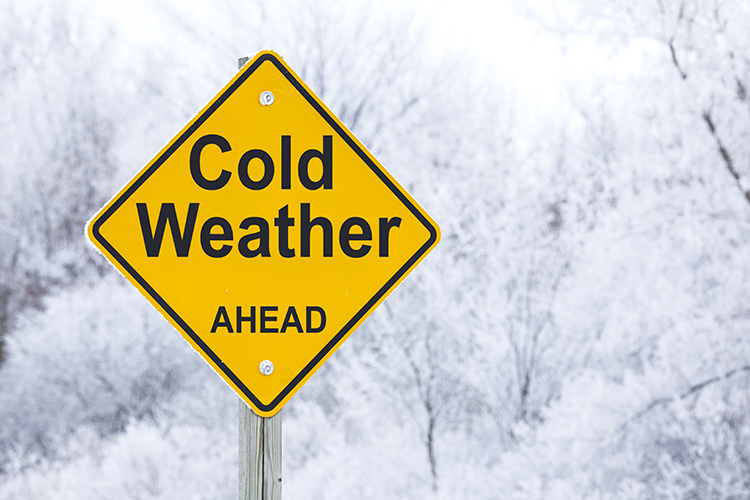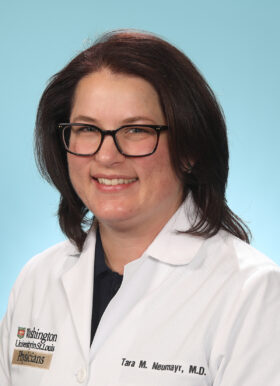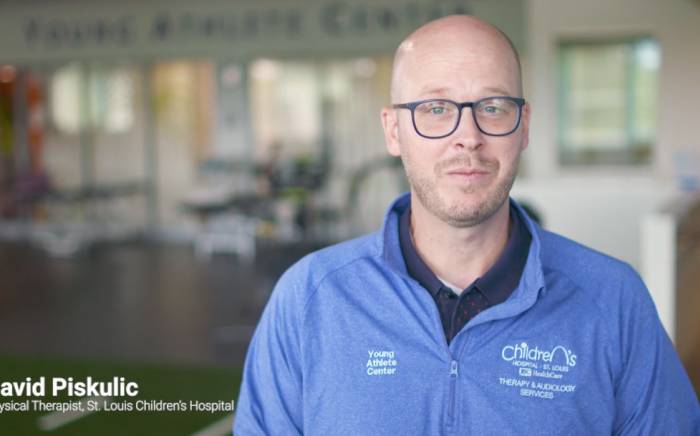
October 18, 2022, 2:35 p.m.
Tara Neumayr
Some of you may vaguely remember November of 2019 and before: a time when sniffles and minor fevers were potential daycare inconveniences rather than cataclysmic life events, and your mother-in-law referred to every throat-clearing as a “croupy cough” rather than a “near-death experience.” As parents, a “just a virus” diagnosis generally was reassuring. We didn’t necessarily spend much time or energy trying to decipher the precise virus at fault. A baffling array of inhalers and nebulizers, steroids and the occasional antibiotic (for the not “just a virus” varieties) were the main clue that not all acute childhood respiratory illnesses are identical in their effects and significance. An emergency room (ER) visit, hospital stay or even time in the pediatric intensive care unit (PICU) might prompt a more in-depth perspective for a small but real percentage of you.
Navigating a Virus in a COVID-19 World
Now, we live in a world where having some idea of which virus is affecting your child may spare us some sleepless, anxious nights and give us a good sense of how to help them and what we should look out for. In general, if you are feeling uneasy about your child’s health, it is never wrong to contact their pediatrician for advice and guidance. And any child who appears to be working hard to breathe or struggling to move air well, who is excessively sleepy or inconsolable or who cannot take in or keep down enough fluids to remain well-hydrated should have an immediate evaluation in an ER.
Earlier attention may be necessary if your child is particularly vulnerable to illnesses – if they are a young infant or have asthma, diabetes, congenital heart disease, or any other chronic or complex medical condition. If your child is generally in good health and their symptoms are mild, this guide may help you figure out which virus is causing the trouble.
Common Cold
A family of viruses called rhinoviruses often causes the common cold. Viruses in the coronavirus family can also cause the common cold. They are related to COVID-19 but are less virulent and have long circulated within the population. The illnesses caused by these viruses are generally subtle in onset – they may start with a runny nose, mild nasal congestion, or a low-grade fever – and they tend to last between five and 10 days. During that time, children feel crummy, may not sleep well, and may be irritable and uninterested in eating or drinking as usual.
As a parent, all you can do is provide them with symptomatic care such as Tylenol and watch out for signs that they are not taking in enough fluids (not making wet diapers as frequently as usual, as the main example). Humidified air may help some children feel more comfortable. Just make sure the machine is well-cleaned before use and – for your own sake – doesn’t leak all over your floor. It is important to know that cough suppressants/cough syrups are not recommended for children under three years of age.
Influenza (a.k.a., seasonal flu)
Most of the time, children experience seasonal flu as a particularly nasty cold. They may have high fevers, chills, body aches, body shaking (also called rigors), headaches and severe coughs. This can last for 7-10 days typically, and then your child will experience a gradual improvement and return to normal activity. In a few patients, influenza can cause very severe illness, resulting in hospitalization and even death, so it’s important to prevent severe cases if you can.
Fortunately, the annual flu shot prevents severe illness in most people. I strongly recommend that you and your children (six months and up) get a flu shot every year. These shots can easily be obtained through your pediatrician or a retail pharmacy. For breakthrough cases, a course of Tamiflu can lessen the severity and duration of illness if given within the first 48-72 hours of symptom onset.
RSV (Respiratory Syncytial Virus)
RSV in older children and adults is typically indistinguishable from the common cold. It is characterized by a strong cough that may come in fits of coughing, lasts for 7-10 days, and can generally make you feel rotten for a while. In smaller children and infants, however, RSV can be quite severe and even life-threatening, leading to a stay in the hospital or PICU. Children in this age group may exhibit fits of coughing, with or without vomiting after the cough, wheezing and difficulty breathing such that they breathe very fast and very hard. Any child who seems to be having difficulty breathing should be evaluated emergently.
There is no specific treatment available for RSV, so medical professionals will provide supportive care – suctioning the nose, giving oxygen and even using breathing machines if needed – until your child can fight off the virus. Specific groups of highly vulnerable children under two years of age (for example, those born very prematurely or with congenital heart disease) are recommended to get a monthly infusion of a preventive treatment called Synagis to lessen the likelihood of severe disease. Your doctor can tell you whether your child requires this measure.
Croup
The parainfluenza virus most often causes croup. It manifests mostly in small children and infants as a “barky” cough – like a seal – associated with fever, sore throat, body aches, and sometimes noisy breathing, especially as the child attempts to breathe in (this noise is called stridor as opposed to wheezing, which happens with exhalation). The cough may come in fits and may be followed by vomiting. As the swelling that causes the noisy breathing worsens, children can struggle to breathe and get quite irritable and panicked.
Steamy or particularly cold air can at least temporarily help the child get air in – which is why the child often looks better after going out into the cold air on the way to the ER. Particularly severe cases may require a course of steroids for airway swelling, and the most severe cases can require hospitalization and special breathing treatments. The worst of the croup usually passes by day three of the illness, though symptoms can last between five and 10 days.
COVID-19
At this time, COVID-19 can’t properly be classified among the seasonal viral illnesses, but its symptoms are similar enough to the above, and it is so much a part of our daily ruminations that I would be remiss not to mention it. Many children have asymptomatic infections, but those exhibiting symptoms tend to have cough and fever, which may be quite high, and older children may report a loss of smell or taste or profound tiredness.
Since its symptoms overlap significantly with the above viruses, only a dedicated diagnostic test will be able to truly tell the difference, and timely testing and isolation of affected patients and their contacts is still a huge part of trying to contain the damage the virus can cause. Doctors and researchers have made enormous strides in their understanding of the best ways to treat this novel virus, but patients who do get severe cases – and that includes a very small percentage of children – are still at risk of hospitalization and death.
Vaccines are by far the best way to prevent severe illness and death from COVID-19. I cannot stress enough how strongly I encourage all who are eligible to schedule an appointment to receive a vaccine if you have not yet done so. These vaccines are well-studied, safe, and highly effective. Both of my children are fully vaccinated, including a booster dose for my oldest (my youngest is not yet eligible for a booster dose).
Vaccines and boosters for all eligible ages are available through several BJC HealthCare locations or retail pharmacies and vaccine sites across the region. Some pediatricians or primary care offices may also offer the COVID-19 vaccine to their patients, so check with your doctor as well!
I hope you find this brief guide helpful throughout this fall and winter. Stay safe, stay healthy, and stay hopeful. Wash your hands, cover your coughs, stay home when you’re sick, wear a mask when it’s appropriate, and get vaccinated against both the flu and COVID-19 when you can.
If your child experiences symptoms this respiratory season, all caregivers should know your preference for which hospital a child should be taken to in case of an emergency. Our Washington University Children’s After Hours locations provide convenient medical care for your child’s illnesses and injuries as a faster alternative to the ER when your pediatrician’s office is closed.
In case of a medical emergency with a child, determine where the nearest accredited Level I pediatric trauma center is located. St. Louis Children’s Hospital has six pediatric ER locations across St. Louis and the southern Illinois region including St. Louis Children’s Hospital, Children’s Hospital at Memorial Hospital Belleville, Children’s Hospital at Memorial Hospital Shiloh, Children’s Hospital at Missouri Baptist Medical Center, Children’s Hospital at Northwest HealthCare and Children’s Hospital at Progress West Hospital.
 Dr. Tara M. Neumayr is an Assistant Professor in the Divisions of Pediatric Critical Care Medicine and Pediatric Nephrology at the Washington University School of Medicine. Dr. Neumayr works as an attending physician in the Pediatric Cardiac Intensive Care Unit as well as on the Pediatric Nephrology in-patient and consulting services. Dr. Neumayr earned her Bachelor of Arts degree with Honors in English at Duke University before returning to her home state of South Dakota to attend the University of South Dakota School of Medicine, where she earned her medical degree. Following her pediatric residency at the Mayo Clinic Graduate School of Medicine in Rochester, MN, Dr. Neumayr completed fellowship training in both Pediatric Critical Care Medicine and Pediatric Nephrology at the Washington University School of Medicine. She joined the faculty after her graduation in 2011 and completed an additional year of training in Pediatric Cardiac Critical Care. Her clinical and research interests explore the relationships between Acute Kidney Injury and critical illness in infants and children. Dr. Neumayr is board certified in Pediatrics, Pediatric Critical Care Medicine, and Pediatric Nephrology.
Dr. Tara M. Neumayr is an Assistant Professor in the Divisions of Pediatric Critical Care Medicine and Pediatric Nephrology at the Washington University School of Medicine. Dr. Neumayr works as an attending physician in the Pediatric Cardiac Intensive Care Unit as well as on the Pediatric Nephrology in-patient and consulting services. Dr. Neumayr earned her Bachelor of Arts degree with Honors in English at Duke University before returning to her home state of South Dakota to attend the University of South Dakota School of Medicine, where she earned her medical degree. Following her pediatric residency at the Mayo Clinic Graduate School of Medicine in Rochester, MN, Dr. Neumayr completed fellowship training in both Pediatric Critical Care Medicine and Pediatric Nephrology at the Washington University School of Medicine. She joined the faculty after her graduation in 2011 and completed an additional year of training in Pediatric Cardiac Critical Care. Her clinical and research interests explore the relationships between Acute Kidney Injury and critical illness in infants and children. Dr. Neumayr is board certified in Pediatrics, Pediatric Critical Care Medicine, and Pediatric Nephrology.









